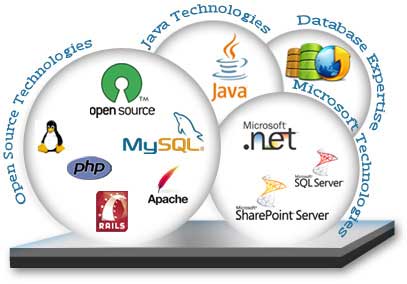Mobile Apps Development

In today's digital age, where smartphones have become an integral part of our daily lives, the demand for mobile applications has skyrocketed. From social networking to productivity tools, entertainment, and e-commerce, mobile apps cater to a wide array of needs. Behind the sleek interfaces and seamless functionalities lie intricate processes of app software development, combining artistry and technical expertise. This article delves into the multifaceted world of app software development, exploring its key aspects, challenges, and the evolving landscape of mobile applications.
At the core of app software development is the art of understanding user needs and crafting intuitive experiences. Before a single line of code is written, developers embark on a journey of ideation and design, conceptualizing the app's purpose, features, and user interface. User experience (UX) design plays a pivotal role in ensuring that the app resonates with its target audience. Through wireframing, prototyping, and user testing, designers iterate to create interfaces that are both visually appealing and user-friendly.
Once the design phase is complete, developers transition to the technical realm, where the science of coding takes center stage. Mobile app development encompasses a myriad of technologies and programming languages, with platforms like iOS and Android requiring different approaches. For iOS development, Swift or Objective-C are commonly used, while Android developers rely on Java or Kotlin. Cross-platform frameworks such as React Native and Flutter have also gained prominence, offering the advantage of code reusability across multiple platforms.
Regardless of the chosen technology stack, developers face a host of challenges during the coding process. Performance optimization, compatibility across devices, and security concerns are among the top considerations. Ensuring that the app runs smoothly on various devices and screen sizes requires meticulous testing and debugging. Moreover, cybersecurity threats loom large, necessitating robust measures to safeguard user data and prevent unauthorized access.
Agile methodologies have revolutionized the software development lifecycle, enabling teams to adapt to changing requirements and deliver incremental updates. Through sprints, daily stand-ups, and continuous feedback loops, agile teams foster collaboration and transparency. This iterative approach not only accelerates the development process but also allows for early user feedback, facilitating course corrections and enhancements.
Beyond the technical intricacies, app software development encompasses a broader ecosystem of tools and frameworks. Application programming interfaces (APIs) serve as bridges between different software components, enabling seamless integration of functionalities such as payment gateways, location services, and social media sharing. Cloud computing platforms provide scalable infrastructure for hosting and managing app data, ensuring scalability and reliability.
The advent of artificial intelligence (AI) and machine learning (ML) has introduced new dimensions to app development, empowering developers to create smarter, more personalized experiences. From recommendation engines to natural language processing (NLP) and image recognition, AI-powered features are reshaping the landscape of mobile applications. By analyzing user behavior and preferences, apps can deliver tailored content and predictive insights, enhancing user engagement and satisfaction.
The proliferation of app stores has democratized app distribution, allowing developers to reach global audiences with ease. However, amidst the vast sea of apps, achieving visibility and standing out from the competition pose significant challenges. App store optimization (ASO) strategies, such as keyword optimization, compelling visuals, and user reviews, play a crucial role in driving downloads and user acquisition.
At the core of app software development is the art of understanding user needs and crafting intuitive experiences. Before a single line of code is written, developers embark on a journey of ideation and design, conceptualizing the app's purpose, features, and user interface. User experience (UX) design plays a pivotal role in ensuring that the app resonates with its target audience. Through wireframing, prototyping, and user testing, designers iterate to create interfaces that are both visually appealing and user-friendly.
Once the design phase is complete, developers transition to the technical realm, where the science of coding takes center stage. Mobile app development encompasses a myriad of technologies and programming languages, with platforms like iOS and Android requiring different approaches. For iOS development, Swift or Objective-C are commonly used, while Android developers rely on Java or Kotlin. Cross-platform frameworks such as React Native and Flutter have also gained prominence, offering the advantage of code reusability across multiple platforms.
Regardless of the chosen technology stack, developers face a host of challenges during the coding process. Performance optimization, compatibility across devices, and security concerns are among the top considerations. Ensuring that the app runs smoothly on various devices and screen sizes requires meticulous testing and debugging. Moreover, cybersecurity threats loom large, necessitating robust measures to safeguard user data and prevent unauthorized access.
Agile methodologies have revolutionized the software development lifecycle, enabling teams to adapt to changing requirements and deliver incremental updates. Through sprints, daily stand-ups, and continuous feedback loops, agile teams foster collaboration and transparency. This iterative approach not only accelerates the development process but also allows for early user feedback, facilitating course corrections and enhancements.
Beyond the technical intricacies, app software development encompasses a broader ecosystem of tools and frameworks. Application programming interfaces (APIs) serve as bridges between different software components, enabling seamless integration of functionalities such as payment gateways, location services, and social media sharing. Cloud computing platforms provide scalable infrastructure for hosting and managing app data, ensuring scalability and reliability.
The advent of artificial intelligence (AI) and machine learning (ML) has introduced new dimensions to app development, empowering developers to create smarter, more personalized experiences. From recommendation engines to natural language processing (NLP) and image recognition, AI-powered features are reshaping the landscape of mobile applications. By analyzing user behavior and preferences, apps can deliver tailored content and predictive insights, enhancing user engagement and satisfaction.
The proliferation of app stores has democratized app distribution, allowing developers to reach global audiences with ease. However, amidst the vast sea of apps, achieving visibility and standing out from the competition pose significant challenges. App store optimization (ASO) strategies, such as keyword optimization, compelling visuals, and user reviews, play a crucial role in driving downloads and user acquisition.





















